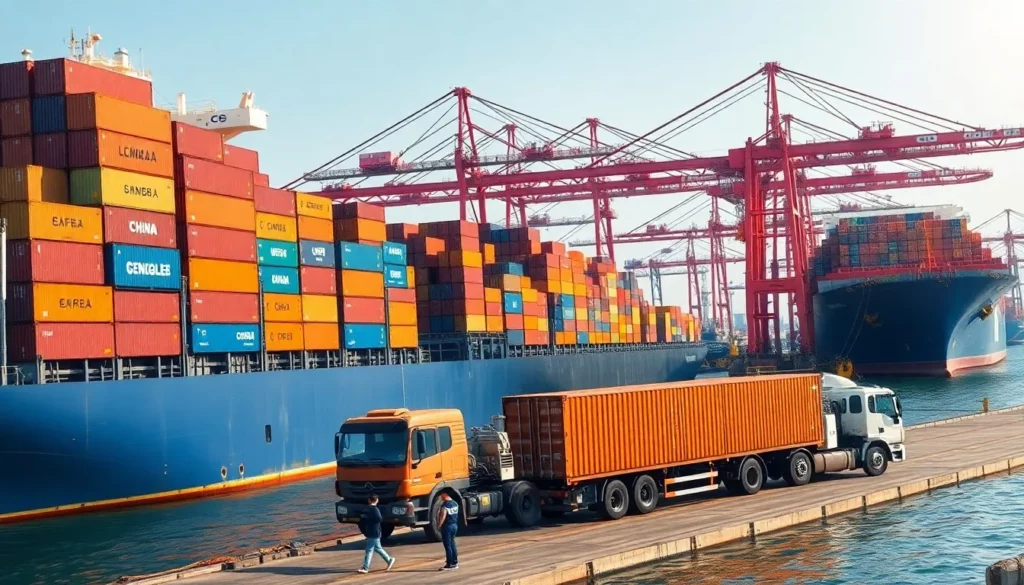As a B2B importer, your success depends on mastering international shipping. This isn’t just about moving boxes; it’s about making strategic decisions that boost your competitive edge. I’m Linda Xiao, and with 20 years of experience in freight forwarding, I’m here to give you the framework, cost analysis, and compliance guidance you need. At AIIDII, we believe in empowering importers like you to optimize your China-to-Sri Lanka supply chain for peak efficiency and profitability.
To manage your shipments effectively, you need a professional China freight forwarder to handle your end-to-end logistics. This includes sea freight, air freight, customs clearance, and door-to-door delivery. When you choose a partner, look for one with proven expertise on the China-Sri Lanka route, transparent pricing, and a full suite of services.
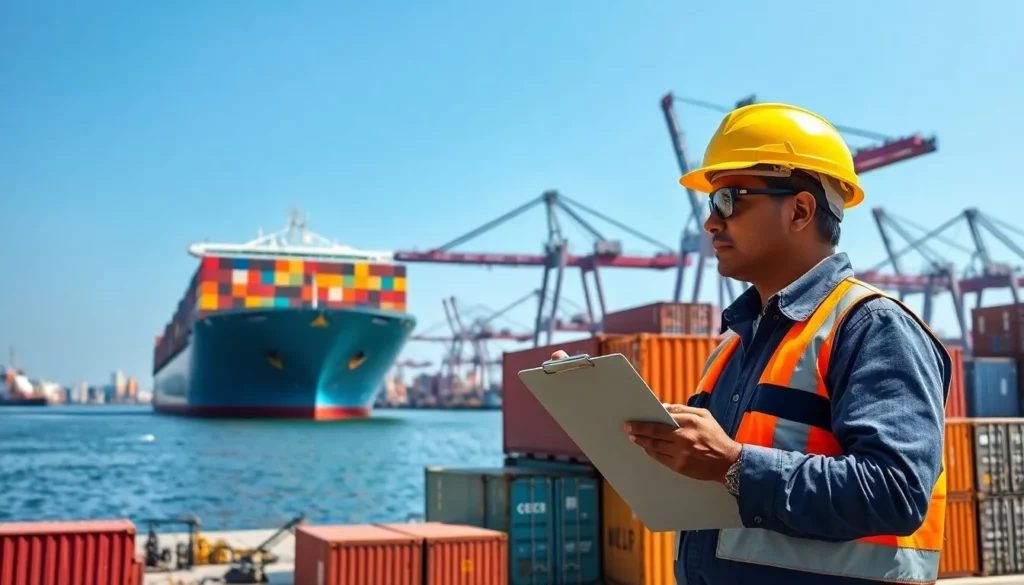
Strategic Freight Selection: Analyzing Your Options
Choosing the right shipping mode is your first major decision. It’s a balance of speed, cost, and volume. Here is an at-a-glance comparison of your primary options for shipping from China to Sri Lanka.
| Shipping Mode | Typical Transit Time | Cost Profile | Best For Your Business When… |
| Sea Freight | 12-22 days (Port-to-Port) | Low | …you are shipping volumes over 15 CBM and cost-efficiency is a priority. |
| Standard Air Cargo | 3-7 days (Airport-to-Airport) | High | …you have time-sensitive or high-value goods that need to arrive quickly. |
| Express Courier | 2-4 days (Door-to-Door) | Premium | …you need to move urgent documents or small parcels (under 100 kg) fast. |
Sea Freight: The Foundation for High-Volume Shipping
Sea freight is the backbone of the China-Sri Lanka trade route. For you, it allows for systematic supply chain planning and scalable volume management that directly impacts your bottom line. If you manage regular shipments larger than 15 cubic meters (CBM), sea freight transforms logistics from a mere cost into a strategic asset.
The Port of Colombo is Sri Lanka’s main cargo gateway, connecting with major Chinese ports like Shanghai, Shenzhen, Ningbo, Guangzhou, and Qingdao. In my two decades in this field, I’ve consistently observed that your choice of shipping partner directly affects transit reliability. An established forwarder leverages strong carrier relationships to secure priority bookings, which is essential during peak seasons.
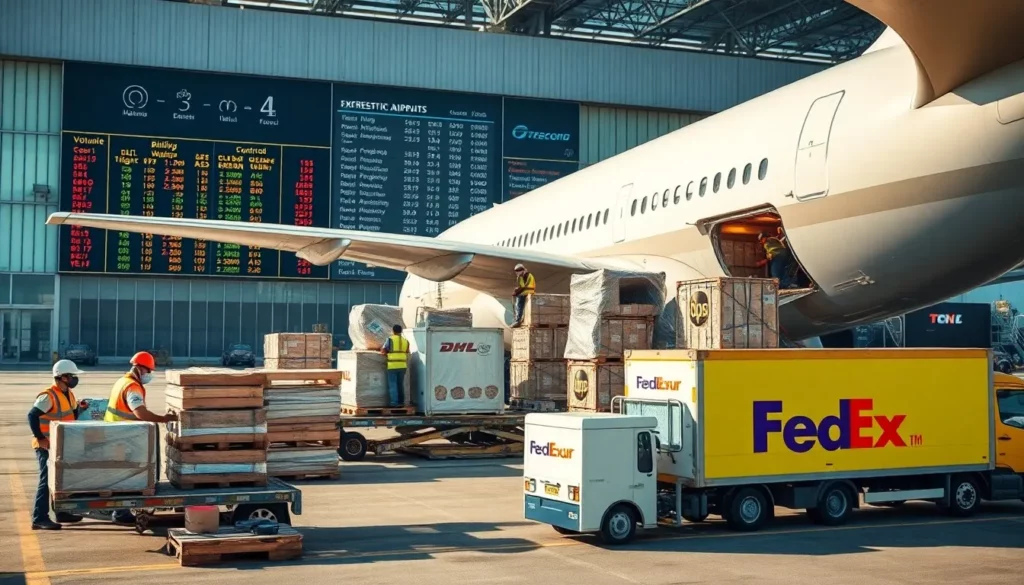
Full Container Load (FCL): Efficiency for Large Shipments
FCL shipping offers unmatched value when your shipment volume is over 15 CBM. It provides exclusive use of a container, with ocean freight rates typically ranging from $1,000-$1,600 (20ft) to $1,200-$2,900 (40ft). Remember, this is only one part of your total landed cost.
Here are the key advantages of using FCL for your larger shipments:
- Enhanced Security: Your goods remain sealed in a dedicated container from origin to destination, minimizing handling.
- Reduced Risk of Damage: With no co-loading, you eliminate the risk of your cargo being damaged by other importers’ goods.
- Faster Customs Processing: Inspections are streamlined for single-consignee shipments compared to mixed LCL consolidations.
- Maximum Cargo Integrity: FCL is the best choice for high-value electronics, machinery, or branded goods where maintaining product quality is paramount.
Best Practice: Optimize your container usage by coordinating with suppliers to maximize loading efficiency. Proper planning can increase your container capacity utilization from 70% to over 90%, directly cutting your per-unit shipping costs.
Less than Container Load (LCL): Flexibility for Smaller Cargo
For shipments between 1-15 CBM, LCL consolidation gives you access to ocean freight without needing to fill a full container. Current LCL rates are between $60-$200 per cubic meter. While cost-effective, the consolidation process adds 3-5 days to the total transit time compared to FCL.
When you choose LCL, you must focus on these critical points:
- Packaging Precision: Because your cargo shares container space, you must invest in proper palletization, moisture protection, and clear marking to ensure its integrity.
- Documentation Accuracy: Meticulous paperwork is essential in a consolidated environment.
- Forwarder Expertise: Your forwarder’s ability to manage cargo segregation and consolidation protocols directly impacts whether your goods arrive safely.
Critical Warning: LCL shipments have minimum billing thresholds, typically 1 CBM or 1 ton. If your shipment is below this minimum, you may find that an express courier service is a more economical alternative.
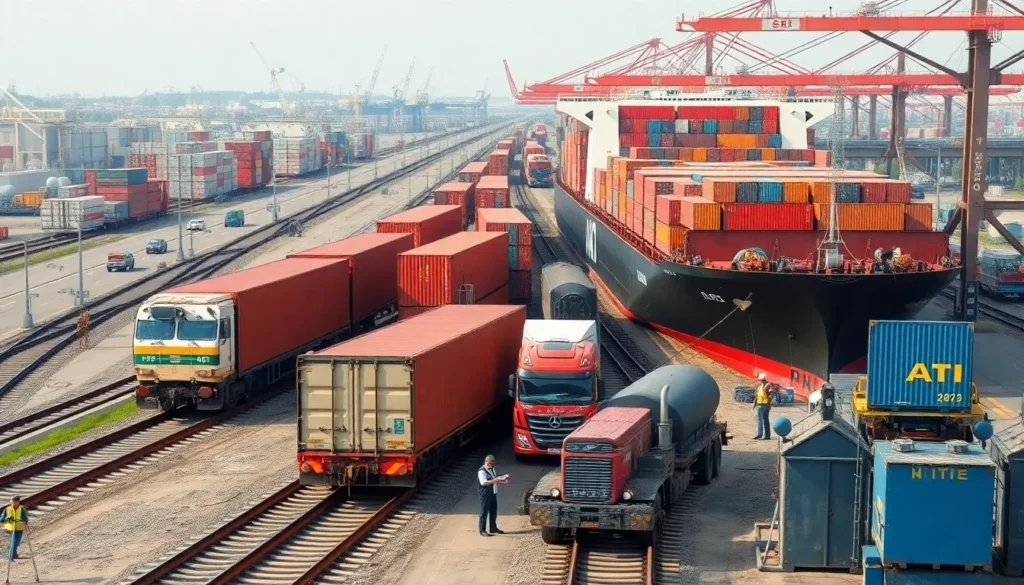
Sea Freight Transit Times: Planning a 10-22 Day Journey
Sea freight transit from China to Sri Lanka generally takes 12-22 days, depending on the departure port.
| Departure Port Region | Average Port-to-Port Transit Time |
| Southern China (e.g., Shanghai, Shenzhen) | 14 – 18 days |
| Northern China (e.g., Qingdao) | 16 – 22 days |
These timeframes cover only the ocean transit. Your total logistics timeline must also include inland transport in China (2-3 days), customs clearance (1-3 days), and final delivery in Sri Lanka (1-2 days).
Pro Tips: Build a 7-10 day buffer into your inventory planning. This cushion helps you absorb transit variations and customs delays, preventing stockouts while you continue to benefit from cost-effective sea freight.
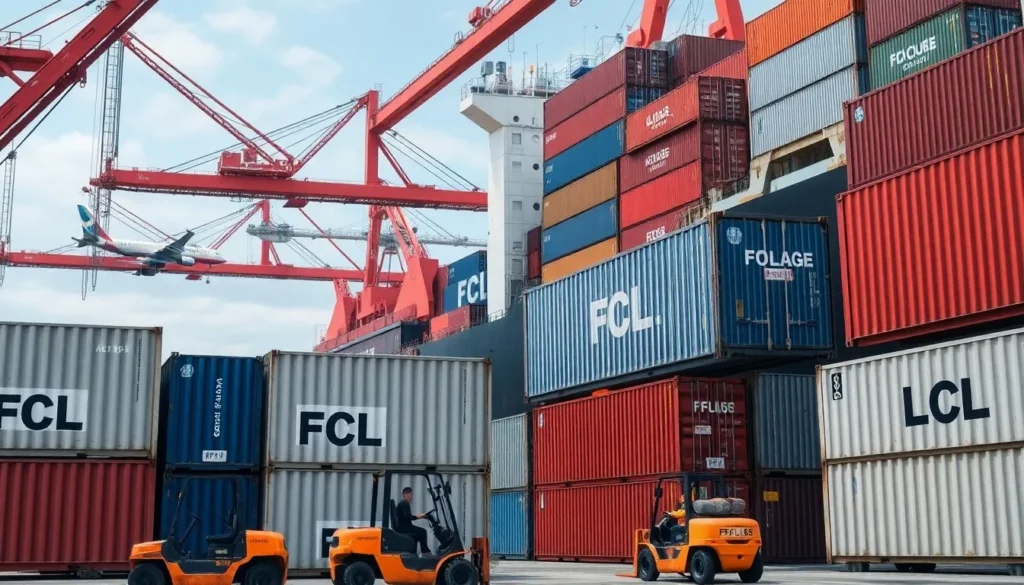
Air Freight and Express Services: Prioritizing Speed
Standard Air Cargo: For Time-Sensitive & High-Value Goods
Air cargo connects China and Sri Lanka rapidly for shipments needing delivery within 3-7 days, with rates from $2-$8 per kilogram. It’s the right choice for time-sensitive inventory, high-value electronics, and perishable goods, primarily moving through Bandaranaike International Airport (CMB).
Key Advantages of Standard Air Cargo:
- Speed: The fastest way to move bulk commercial goods.
- Enhanced Security: Fewer handling touchpoints compared to sea freight reduces the risk of theft or damage.
- Controlled Environments: Ideal for sensitive items like pharmaceuticals or electronics that require temperature control.
Key Consideration for Air Cargo:
- Dimensional Weight: You must be aware of dimensional weight pricing. For lightweight but bulky items, charges are based on volumetric weight, not actual weight, which can significantly raise costs.
Key Metric: Air freight typically costs 5-10 times more than sea freight per kilogram. However, the delivery speed justifies this premium for urgent shipments or high-value, low-weight cargo.
Express Courier Services: The Fastest Door-to-Door Solution
For urgent parcels under 100 kg, express couriers like DHL, FedEx, and UPS provide all-inclusive, door-to-door delivery in just 2-4 days. This is the most effective solution for documents, prototypes, or emergency parts replenishment where speed outweighs the premium cost of $5-$8 per kilogram.
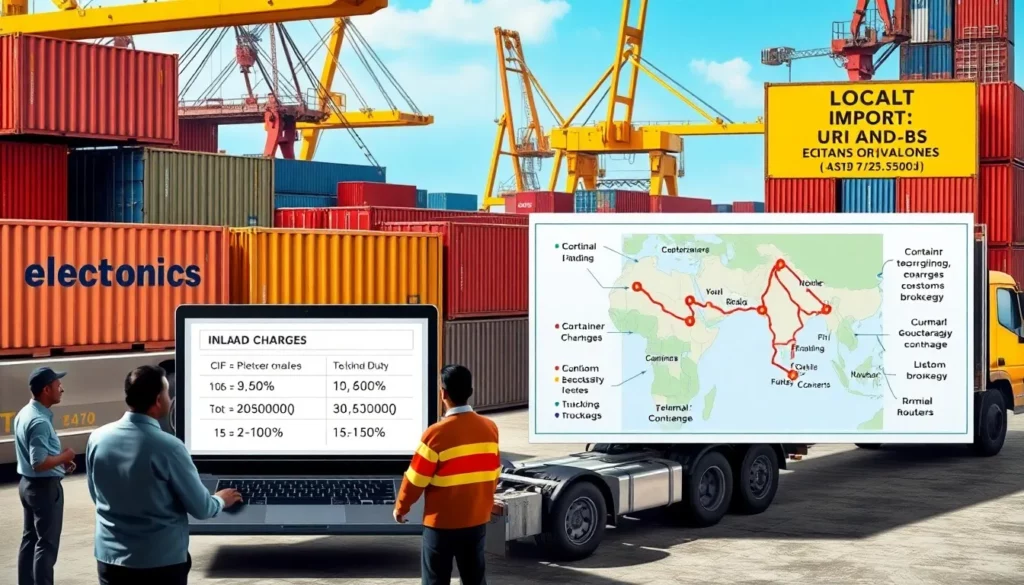
Mastering Landed Costs: A Breakdown for Importers
To accurately budget for your imports, you must understand every component of the total landed cost. It’s much more than just the freight rate. Here is a breakdown of the typical charges you will encounter.
| Cost Component | Typical Rate / Calculation | Purpose |
| Base Freight (FCL) | $1,000 – $2,900 per container | Core cost of ocean transport from port to port. |
| Base Freight (LCL) | $60 – $200 per CBM | Cost of ocean transport based on volume. |
| Base Freight (Air) | $2 – $8 per kg | Core cost of air transport from airport to airport. |
| Surcharges (BAF, PSS) | $400 – $1,500+ per container | Variable fees for fuel price changes and peak season demand. |
| Terminal Handling (THC) | $350 – $700 per container (total) | Fixed fees for loading/unloading at origin and destination ports. |
| Import Duties | 0% – 25%+ (of CIF value) | Government tax based on the product’s HS Code classification. |
| Value Added Tax (VAT) | 18% of (CIF Value + Duty) | Sri Lanka’s standard tax on imported goods. |
| Local Charges | $400 – $1,300+ per container | Fees for customs brokerage, local transport, and port fees in Sri Lanka. |
Understanding Incoterms: Defining Your Role and Risk
Incoterms define the responsibilities of the buyer and seller. Your choice has a direct impact on your costs, control, and risk. Below is a quick comparison, followed by a detailed look at the most common terms.
| Incoterm | Your (Buyer’s) Responsibility | Seller’s Responsibility | Best For |
| EXW | All logistics, from factory pickup to final delivery. | Making goods available at their facility. | Experienced importers seeking maximum control. |
| FOB | Main international freight, insurance, and import. | Export clearance and delivery to the Chinese port. | Importers wanting a balance of control and cost. |
| CIF | Import customs clearance and final delivery. | Main freight and insurance to the Sri Lankan port. | New importers who prioritize convenience over control. |
| DDP | Unloading at your facility. | Everything, including duties and final delivery. | Importers seeking a hands-off, all-inclusive solution. |
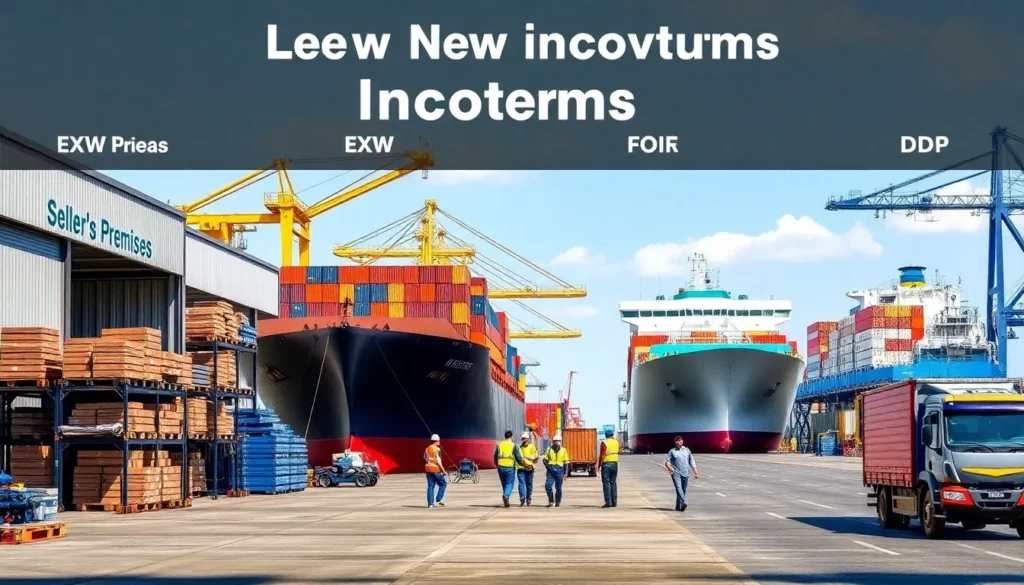
Key Incoterms for China-Sri Lanka Importers
EXW (Ex Works): Maximum Buyer Control
Under EXW, your responsibilities are at their peak.
- Your Role: You arrange and pay for everything from the moment the goods leave the seller’s factory. This includes pickup, export clearance in China, main freight, insurance, import clearance in Sri Lanka, and final delivery.
- Seller’s Role: Their only job is to have the goods ready for pickup at their premises.
- Best For: You, if you have a strong logistics partner in China and want complete control over the entire process and cost structure.
Critical Warning: EXW transfers all export compliance risk to you. If you are not an expert in Chinese export regulations, confirm your freight forwarder can handle all export formalities before selecting this term.
FOB (Free On Board): The Balanced Choice
FOB is the most popular Incoterm for sea freight because it provides a clear and logical split of responsibilities.
- Seller’s Role: They handle all costs and risks within China, including inland transport to the port, export documentation, and customs clearance. Their responsibility ends once the goods are loaded onto the vessel.
- Your Role: You take over from that point, managing the ocean freight, marine insurance, import clearance, and final delivery.
- Best For: Most importers. It lets you control the main shipping leg and its costs while leaving the complexities of Chinese export procedures to the seller.
CIF (Cost, Insurance, and Freight): Convenience Over Control
CIF offers convenience, but it comes at the cost of control and potentially higher expenses.
- Seller’s Role: They arrange and pay for the cost, insurance, and freight to get the goods to the port in Sri Lanka.
- Your Role: You are responsible for import customs clearance, duties, taxes, and final delivery from the Sri Lankan port.
- Watch Out For: The insurance purchased by the seller is typically minimal. You also have no control over the freight carrier or shipping schedule, and the costs are often bundled with a markup.
DDP (Delivered Duty Paid): The All-Inclusive Option
DDP represents the minimum responsibility for you and the maximum for your seller.
- Seller’s Role: They handle everything—shipping, insurance, import customs clearance, duty and tax payments—and deliver the goods directly to your specified address.
- Your Role: Your only job is to receive and unload the goods.
- Best For: Importers who want absolute simplicity and a single, all-inclusive price. It’s great for high-value goods or when you don’t have an import license, but it is almost always the most expensive option.
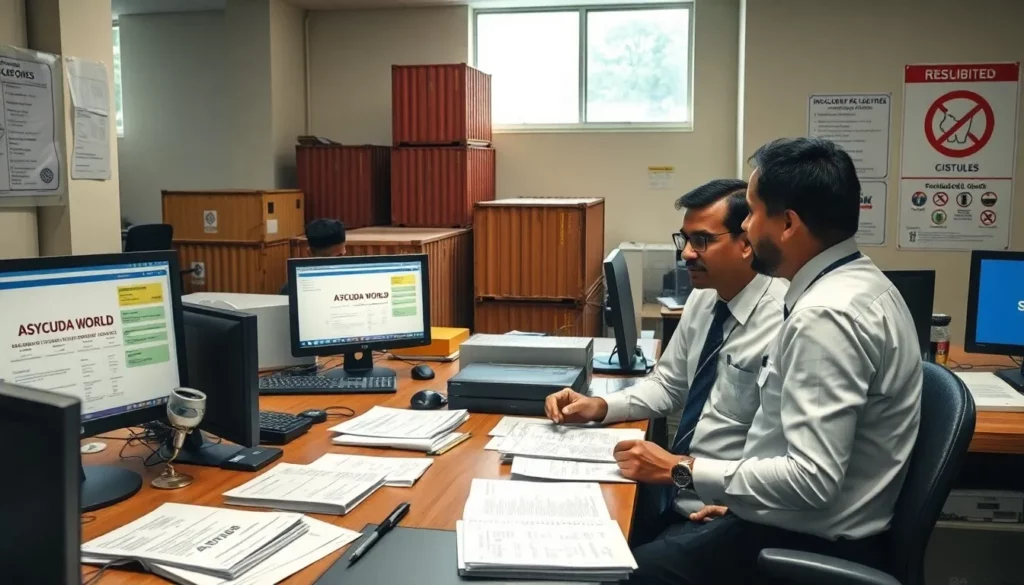
Navigating Sri Lanka’s Customs: A Compliance Guide
The Step-by-Step Customs Clearance Process
- Step 1: Pre-Arrival Filing: Your broker files an electronic customs declaration (CUSDEC) through the ASYCUDA World system 3-5 days before the vessel arrives. This allows processing to begin early.
- Step 2: Examination, Assessment, and Duty Calculation: Based on a risk assessment, your cargo may undergo a documentary review or a physical inspection. Customs officials will verify your declared value to calculate final duties and taxes.
- Step 3: Payment of Duties and Taxes: All duties and taxes must be paid before your cargo is released. Electronic payment systems can process payments in 2-4 hours.
- Step 4: Final Release and Delivery: Once all requirements are met, a final release order is issued, and your forwarder coordinates the pickup and final delivery.
Essential Documentation: Your Compliance Checklist
Accurate and consistent documentation is the key to a smooth customs process. Below are the core documents you will need for every shipment.
| Document | Primary Purpose | Key Details to Get Right |
| Commercial Invoice | Customs valuation & duty calculation. | Accurate product descriptions, item values, currency, and terms of sale. |
| Packing List | Cargo identification & inspection. | Details on contents, weight, dimensions, and markings for each package. |
| Bill of Lading (B/L) / Air Waybill (AWB) | Contract of carriage & title of goods. | Must exactly match consignee info and cargo details on other documents. |
| Certificate of Origin (CO) | Proof of manufacturing country. | Required to qualify for preferential duty rates under trade agreements. |
You may also need an Import License, your Tax Identification Number (TIN) Certificate, and Financial Documentation like a Letter of Credit.
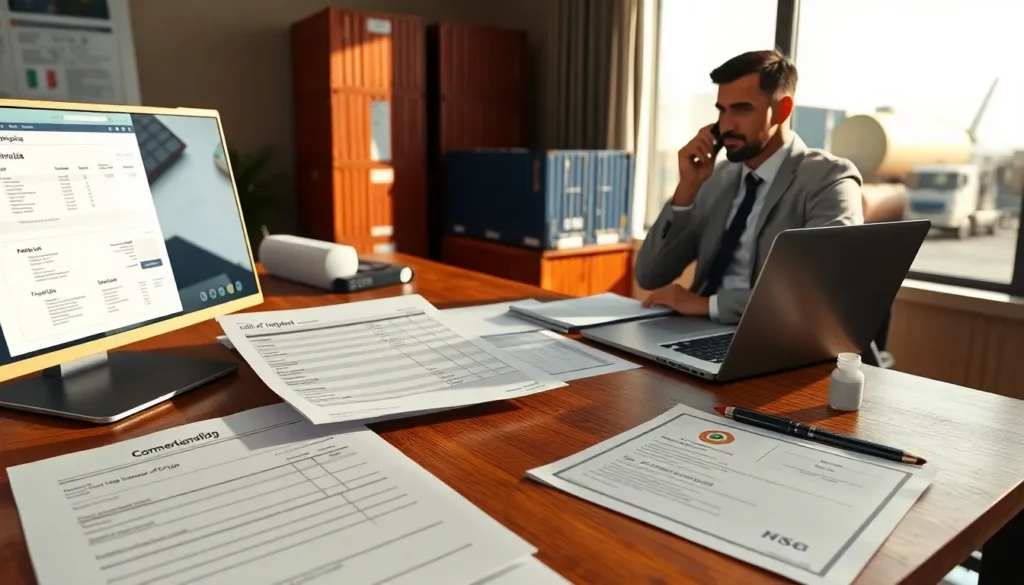
Choosing Your Strategic Partner: How to Select a Freight Forwarder
Core Evaluation Criteria
- Verify Expertise on the China-Sri Lanka Lane. A true partner will have:
- Demonstrated years of experience specifically on this route.
- Client references from businesses like yours.
- Deep knowledge of Chinese export rules and Sri Lankan import regulations.
- Established offices or a proven agent network in both countries.
- Assess the Scope of Services for a True End-to-End Solution. Look for a forwarder who can seamlessly provide:
- Door-to-door service integration.
- In-house customs brokerage.
- Specialized handling for your specific cargo type (e.g., temperature control, oversized).
- Evaluate Technology for Tracking and Visibility. A modern forwarder’s platform should offer:
- Real-time, online cargo tracking.
- A portal for managing documents.
- Automated milestone notifications and exception alerts.
- Compare Pricing Structures and Demand Transparency. A professional quote must be:
- Fully itemized, showing all charges (base rate, surcharges, local fees).
- Free of vague language or hidden costs.
- Clear about rate validity periods.
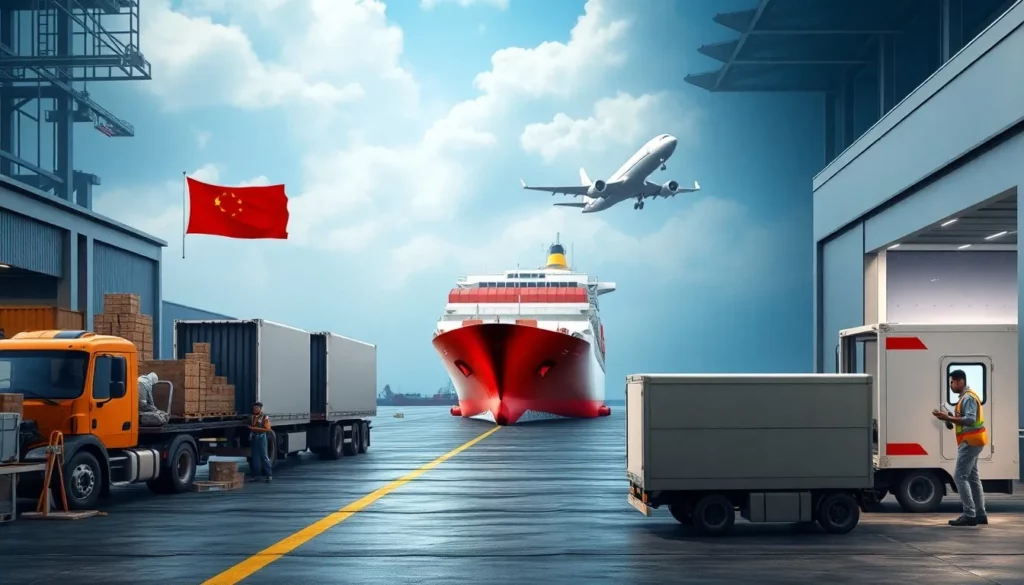
The Importer’s Roadmap: A Step-by-Step Guide
Step 1: Strategic Planning and Partner Selection
- Define Your Needs: Analyze your cargo’s volume, weight, value, and delivery timeline.
- Set Your Budget: Calculate your target landed cost, not just the freight rate.
- Choose Your Mode: Select the best option (FCL, LCL, Air) based on your needs.
- Select Your Partner: Vet and choose a logistics partner with proven China-Sri Lanka expertise.
Step 2: Arranging First-Mile Logistics in China
- Coordinate Pickup: Your forwarder arranges cargo pickup from your supplier.
- Verify Preparation: Confirm that export packaging and labeling are correct.
- Handle Export Formalities: Your forwarder manages Chinese export documentation and customs clearance.
Step 3: Managing the International Transit
- Execute the Shipment: Your forwarder books your cargo on the chosen vessel or flight.
- Manage Documentation: They prepare the Bill of Lading or Air Waybill and send it to all relevant parties.
- Track and Trace: You use their system to monitor your shipment’s progress in real-time.
Step 4: Navigating Customs in Sri Lanka
- Submit Documentation: Your forwarder’s agent submits all required import documents to Sri Lanka Customs.
- Manage Payments: They coordinate the payment of all duties and taxes to ensure a timely release.
- Resolve Issues: If any problems arise during clearance, they act on your behalf to solve them quickly.
Step 5: Coordinating Final-Mile Delivery
- Arrange Transport: Your partner arranges trucking from the port or airport to your final destination.
- Schedule Delivery: They coordinate a delivery time that works for your warehouse schedule.
- Confirm Receipt: You conduct a final inspection and sign the proof of delivery to complete the process.
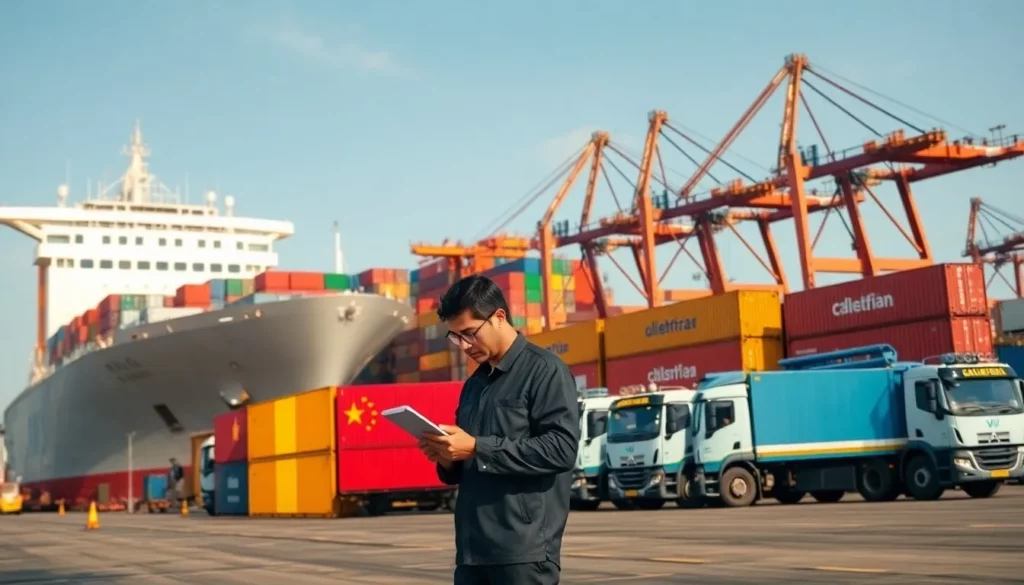
Conclusion
A successful China-to-Sri Lanka shipping strategy is built on a smart integration of cost optimization, compliance, and reliable partnerships. By taking a strategic approach and working with an experienced freight forwarder, you can minimize risks, maximize efficiency, and give your business a powerful competitive advantage.
Frequently Asked Questions (FAQs)
1. What are the key differences when choosing a freight forwarder for the China-Sri Lanka route?
Look for specific China-Sri Lanka trade lane experience, strong carrier relationships, deep Sri Lankan customs expertise, and comprehensive door-to-door services. Also evaluate their technology platforms, pricing transparency, and client references from businesses similar to yours.
2. What are the most common reasons for customs delays in Sri Lanka?
The most frequent causes of delay are inaccurate documentation, incorrect HS code classification, incomplete duty payments, missing permits for restricted goods, valuation disputes with customs, physical cargo examinations, and inconsistencies between shipping documents.
3. How do I decide between FCL and LCL if my shipment is a borderline volume?
Choose FCL if your shipment is over 15 CBM or if cargo security and avoiding contamination are your top priorities. Select LCL for smaller volumes (1-15 CBM) if lowering cost is more important than transit speed. Remember that LCL adds 3-5 days to the journey and requires more robust packaging.
4. What is the impact of choosing FOB versus DDP on my costs and responsibilities?
FOB (Free On Board) gives you control over freight costs and logistics but requires you to manage the main transit and import process. DDP (Delivered Duty Paid) offers total convenience with the seller handling everything, but it typically costs 10-25% more. With FOB, you own the carrier relationship; with DDP, you transfer all logistics responsibility to your supplier.
5. What specific information must I provide for an accurate door-to-door shipping quote?
To get a complete quote, you must provide detailed product descriptions with HS codes, cargo dimensions and weight, pickup and delivery addresses, your required delivery timeline, your preferred Incoterm, any special handling needs (like refrigeration), the estimated shipment value, and the expected frequency of your shipments.

